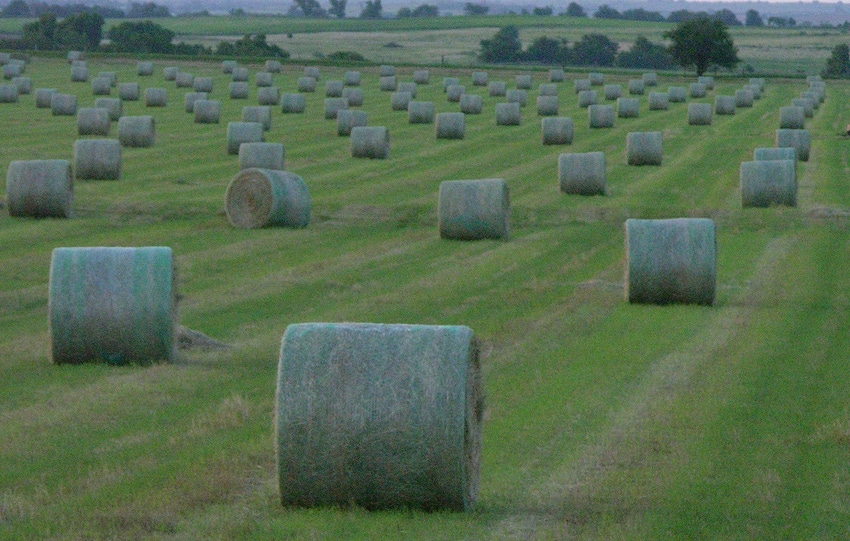
Haying generally removes significantly more nutrients from the soil than do grain crops, in addition to the damage it causes to soil life and the lack of biological stimulation.
Examples from an Oklahoma State University publication generally match the data from other states. These are pounds of nutrient per ton of hay, so you can extrapolate this to a per-acre basis using your hay yields.

Note these are only mineral content. Nitrogen is not counted in this chart, nor are trace minerals, which also are carried off in significant numbers. One could pretty easily calculate the economic values based on local fertilizer prices and cost of application.
Also for the record, Nebraska data says prairie hay has a higher cost in phosphorus, potassium and sulphur. Nebraska also says prairie hay removes about 28 pounds of nitrogen per ton of forage.
According to the Ohio Agronomy Guide each ton of cool-season grass hay removes an average of 40 pounds of nitrogen, 13 pounds of phosphate (P2 O5) and 50 pounds of potash (K2 O).
Recently, Dennis Hancock from the University of Georgia estimated the true value of nutrients carried away by bermudagrass hay at $51-$52 per ton. He estimated fescue hay carries off $67-68 of nutrients per ton, orchard grass hay hauls away $70 per ton and alfalfa takes with it $78 per ton.
With haying you're also bypassing the biological activity provided by cattle, especially if they are in a managed, time-controlled grazing operation wherein urine and dung is well distributed across the land. It is not well researched, but the value is significant. Also, case studies repeatedly show increases in hayfield productivity from well-managed grazing.
Further, the hormonal effects of the saliva from cattle biting the plants, compared with a machine cutting them off, can provide up to a 30% increase in productivity.
Some of this can be explained from a soil-health standpoint. If we use a list we've published before from a chart in the book, The Nature and Properties of Soils, it can help. We carried a story on this in May 2017.
Good things from good grazing and not haying are presented in the list of 11 things that build up soils.
Return of plant residues
Low temperatures and shading
Controlled grazing
Surface mulches
Application of compost and manure
High plant productivity
Bad things from haying and not properly grazing are listed in the list of 11 things that tear down soils.
Whole plant removal
High temperatures and exposures to sun
Application of only inorganic materials
Excessive mineral nitrogen
These lists as I've presented them include some things that apply to all hay meadows, and a few things that only apply to introduced-grass hay meadows. For example, in the "bad things" list, items 3 and 4 only apply to introduced-forage meadows.
About the Author(s)
You May Also Like




